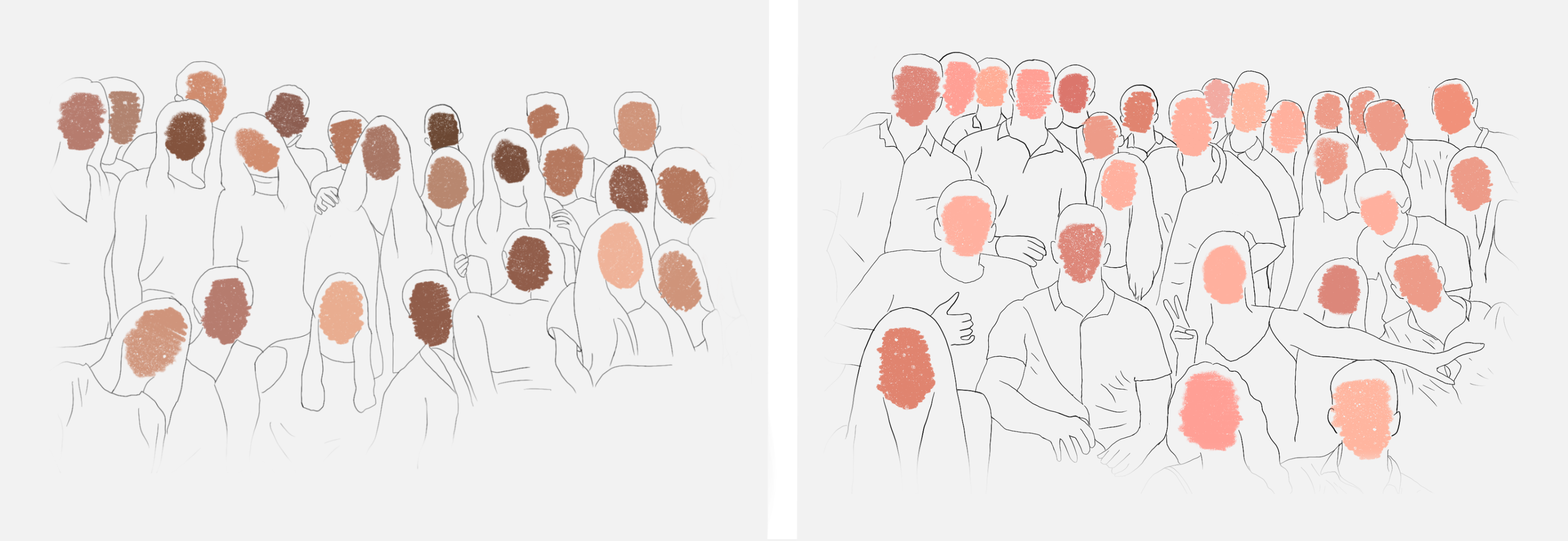“Haven’t I seen this already?”
I came across a photo on social media of some classmates that appeared almost identical to another one I had seen months ago — beaming medical students crowded together against a brick wall of a campus apartment. Déjà vu. But there was one difference. Nearly all the students in this picture were white, whereas all the students in the older picture were non-white.
Over the past two years, a social activism movement against racism burgeoned in the United States as anti-Black and Asian crimes emerged from the shadows. As future physicians of this era, the students in my medical school class try hard to prepare to serve diverse patients. We read about health inequities and work in mixed groups. But when it’s time to choose, most people socialize with those who are like themselves.
As I stared at the photos side by side, I realized I tend to socialize with those who are like me, too. It’s normal to befriend people who share your background. While I am acquainted with nearly the entire class, my closest friends are Muslim, Asian or both, like me.
I’m also friends with many of the students in both photos. They work well with each other in class, laughing and engaging together in great discussions about medicine, anatomy and science. Furthermore, most of my colleagues actively engage in discussions about dismantling racial inequities in medicine. We care. But at the end of the day, we party with our own. It turns out that my medical school class isn’t alone in this tendency. Despite having increasingly diverse populations and having more frequent conversations about race, Americans’ social configurations haven’t really changed.
One of my classmates in the photo of non-white students commented on this social separation between racial groups. He explained that his choice to spend time with people of the same background is intentional. “I’m in white spaces all the time. I am forced to interact with classmates who have problematic and racist ideas. I have a limited amount of time to spend with people in medical school, especially during this pandemic, [so] I’d rather develop relationships with people I have a higher likelihood of creating meaningful relationships with.”
I’m not saying we should force ourselves to be close friends with people we don’t relate to. My own closest friends are people who share my background. But we should at least be aware of the racial and ethnic groups we choose to place ourselves in and the social comfort zones we retreat to when we want to let our hair down. Another classmate — who’s in the photo of white students — didn’t notice the difference between the pictures until I told her. She was shocked and realized for the first time that she held implicit biases in choosing her social group. “I have more work to do on myself going forward!” she told me passionately.
While students may have personal motivations for their social configurations, it’s also important to consider the professional impacts of those configurations. We have a diverse patient population to serve, and there are gaps in health access between patients from different racial and ethnic backgrounds. Many factors play a role in healthcare inequities, including physicians’ biases, stereotypes, attitudes and expectations. Even small differences in implicit racial attitudes have been shown to affect behavior. Furthermore, it’s been found that interracial socialization in medical school is associated with change in students’ implicit racial attitudes and that developing positive relationships with the “out-group” effectively counters biases. Those positive relationships don’t have to be social ones. So even though we’ll likely stay in our comfort zones and socialize with those who share our backgrounds, we should continue to actively seek out and invest in diverse relationships with others in medical school and beyond.
Not all of the students in those photos were comfortable with this discussion on social groups. The majority of them encouraged me to share this essay, but a handful of them reacted with distress. One student asked me why this discussion was necessary, since, “We talk about this all the time while we’re in class!” Another urged me not to share the de-identified photos, worried that our residency chances would be hurt and that our medical school’s reputation as a leader in diversity would be marred. But the medical school deans were excited about the essay, offering me suggestions for where to submit it. The students who were concerned about this essay meant well. But they revealed that a fear of being perceived as racist exists, and some would rather avoid being seen in this way than pursue constructive discussion about how we can improve.
We shouldn’t let fear prevent us from evaluating our behavior. It’s true; we all need comfort zones, and maybe they’re in social groups with those who look like us. But we need to be aware that those comfort zones limit our understanding of those unlike ourselves. And we need to acknowledge the range of opinions, attitudes and experiences we are comfortable with. That’s because after we get home from our parties, we’ll go back to the clinic on Monday with colleagues whose backgrounds are not like our own. And there, we can’t assume that just because we are all “woke” enough to go to a seminar on diversity in medicine, we have any real idea what it’s like to be “one of them.”
Our social tendencies make us comfortable. But they do little to break down biases we may hold and carry over into patient care. So, although we are likely to continue inhabiting separate social spaces that make us feel safe, we can work to combat our biases by developing other positive relationships with those unlike ourselves. And to prevent our comfortable social tendencies from transforming into potentially harmful attitudes and practices in clinic, we must also acknowledge the limits of the social bubbles we inhabit.
Image courtesy of Umer Qureshi.


